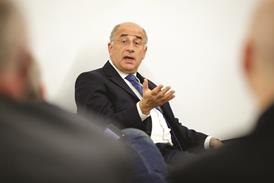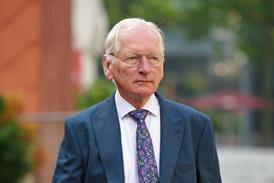Under a new two-year pilot scheme launching on 1 January, a wide range of documents on the court filing system will become publicly accessible. The aim is to advance the principle of open justice and promote greater transparency over court documentation and understanding of decision-making. However, concerns remain about commercially sensitive information being accessible to competitors.


Introduction
The pilot recognises a shift in English court practice away from oral towards documentary evidence and submissions. Though gradual, that shift has been profound. Much of the core material in English proceedings – openings, closings, evidence in chief – is now written and outside the public domain. With an increasing number of hearings now online, it has never been easier for a member of the public to attend a hearing. At the same time, it has never been more difficult for them to understand what is happening.
The Supreme Court decision in Cape Intermediate Holdings Ltd v Dring [2019] UKSC 38, recognising the need for greater transparency, held that non-parties can apply to court to view documents which are placed before the court and referred to during an open hearing. However, non-parties had to justify their request by showing access was in the interests of open justice, which the court would balance against potential harm to others’ legitimate interests.
The pilot changes the position from requiring an application by the person seeking the documents, to the default of provision of documents by parties. The onus is on the parties to persuade the court that access should not be given. That may have far-reaching consequences, not all of which may have been intended.
Pilot scheme
The ‘Access to Public Domain Documents’ pilot will make documents that enter the public domain at an open court hearing accessible to non-parties. Skeleton arguments, witness statements, expert reports (with appendices), written opening and closing submissions, and ‘documents critical to the understanding of the hearing’ will be added by parties to the public-facing side of the court’s electronic filing system (CE-File) within the filing period. Skeleton arguments must be added two days from the start of the hearing and other documents 14 days from when they are used at the hearing.
The pilot, set out in Practice Direction 51ZH, will initially apply to hearings in the Commercial Court, London Circuit Commercial Court and the Financial List (Commercial Court and Chancery Division). It will run for two years and apply to existing and new proceedings in these courts. If successful, it will be extended to other courts, including other divisions of the Business and Property Courts.
Helpfully, the pilot does not include access to any documents exhibited to witness statements, on the basis that this annexed material is not usually read by the judge or referred to during the hearing. Documents annexed to experts’ reports will, however, be filed publicly so the reports can be more easily understood.
The public filing of documents that are ‘critical to the understanding of the hearing’ is not defined and is potentially controversial. The pilot guidance clarifies that these will be documents read out in open court (in full or nearly in full) or referred to extensively. For complex trials running for several days, weeks or months, this category may be extensive and therefore onerous for the parties to comply with.
Parties can apply for filing modification orders (FMOs) to redact genuinely sensitive information. They will also have the opportunity to address sensitivity concerns with the judge at the start of the hearing. Parties will need to integrate confidentiality planning early in their case management. Applications for FMOs and addressing sensitivities will require additional time in court and permitted redactions will place additional burdens on parties. Private hearings are not included in the pilot. Existing orders imposing confidentiality or anonymity will not be affected.
Implications
‘Open justice’ seems an obviously desirable goal, but what benefits does it bring in practice?
- If justice is not only done, but seen to be done, this bolsters faith and confidence in the fairness and incorruptibility of the justice system. However, we would question whether this was a concern many litigants had about the English Commercial Court. Quite the opposite, thankfully, tends to be the case.
- Being able to see more of the legal arguments may assist lawyers, academics and those in legal education to improve their understanding of the law from a ‘professional’ perspective.
- However, we see the real benefits of the transparency initiative as being to improve public awareness about cases of genuine public interest. Such cases seem to be increasingly common, especially with, say, competition follow-on damages claims or judicial review where large swathes of the public may have an interest. It is curious, therefore, that the pilot is to commence in the Commercial Court rather than the Competition Appeal Tribunal or Administrative Court, where cases of significant public interest tend to be heard. Cases in the Commercial Court usually interest much narrower constituencies – the parties and their competitors.
From the perspective of the litigants, it will be important to ensure that the pilot does not have a ‘chilling effect’ that is out of proportion to its relatively limited scope.
- First, while fairness is rarely a concern of litigants before the English courts, costs invariably are. The pilot will almost certainly increase litigation costs without the parties being able to identify a clear benefit to themselves.
- We are also concerned that parties who have proceedings under way (or indeed have chosen a jurisdiction clause in favour of the English court) will feel that they have been given something other than what they bargained for when choosing to litigate before the Commercial Court rather than, say, commencing arbitration.
- The position of witnesses also needs to be considered. Acting as a witness is already a daunting prospect (and witnesses, unlike experts, are not paid for their time). Having a witness statement freely accessible by the public, essentially indefinitely, could tip the balance against some witnesses choosing to give evidence.
On balance, we suspect that these downsides can be managed. The pilot does not necessarily go that much further than the current position. But we also trust that it will be interpreted appropriately by the courts. On that front, we are fortunate that English Commercial Court judges recognise that the Commercial Court is there to provide both justice and – ultimately – a commercial outcome for commercial parties. And with early case management, parties can map the documents most likely to appear in public and manage the disclosure of highly sensitive material under the protection of an FMO.
It would, nevertheless, be ironic if the drive for open justice had the opposite effect, with parties framing their arguments more selectively to control certain documents entering the public domain, or instead entering the ‘closed doors’ of the arbitration arena.
Julian Bubb Humfryes is a partner and Francesca Muscutt a senior knowledge lawyer (senior associate) at DAC Beachcroft. Both are members of the London Solicitors Litigation Association































No comments yet